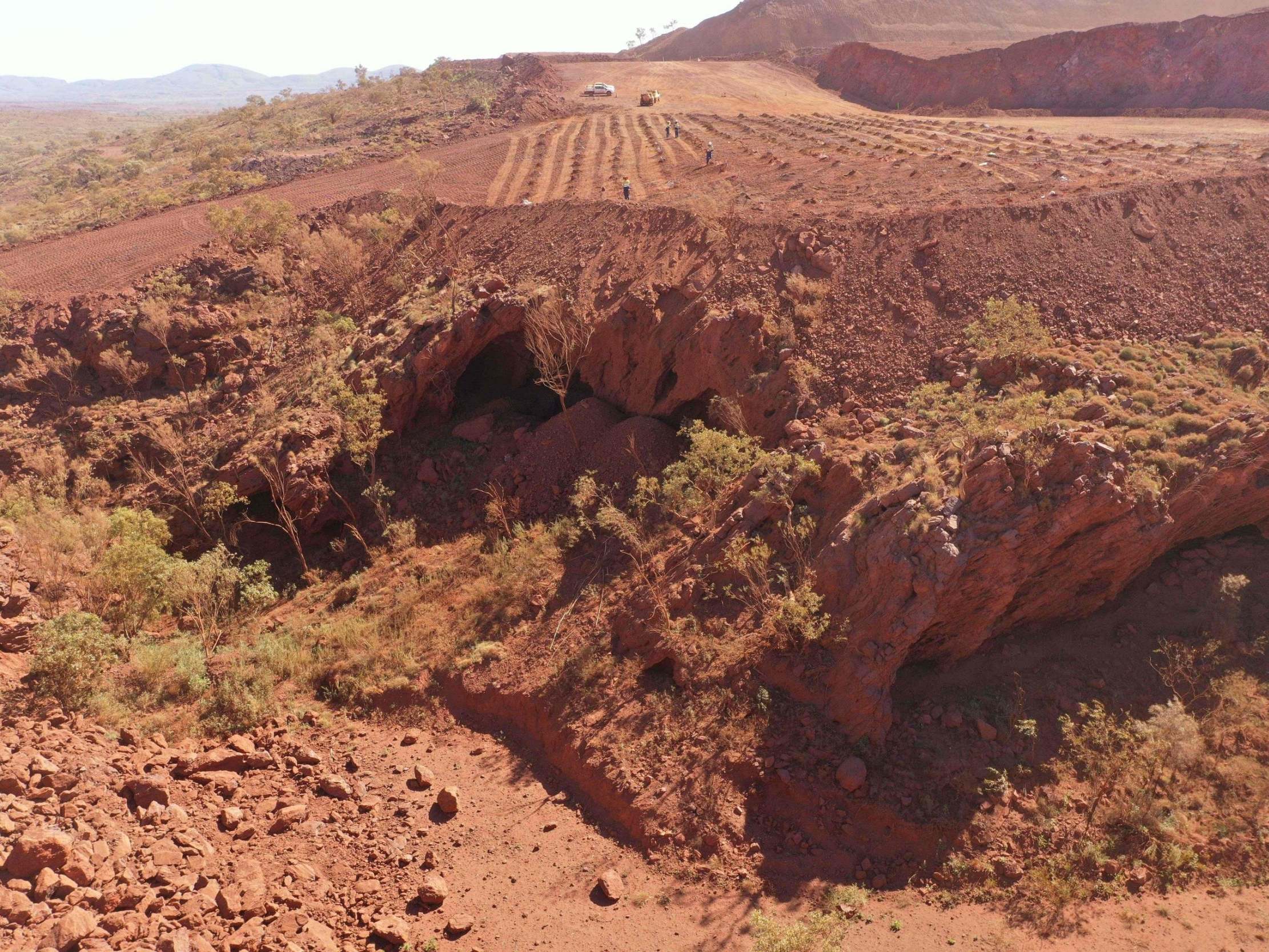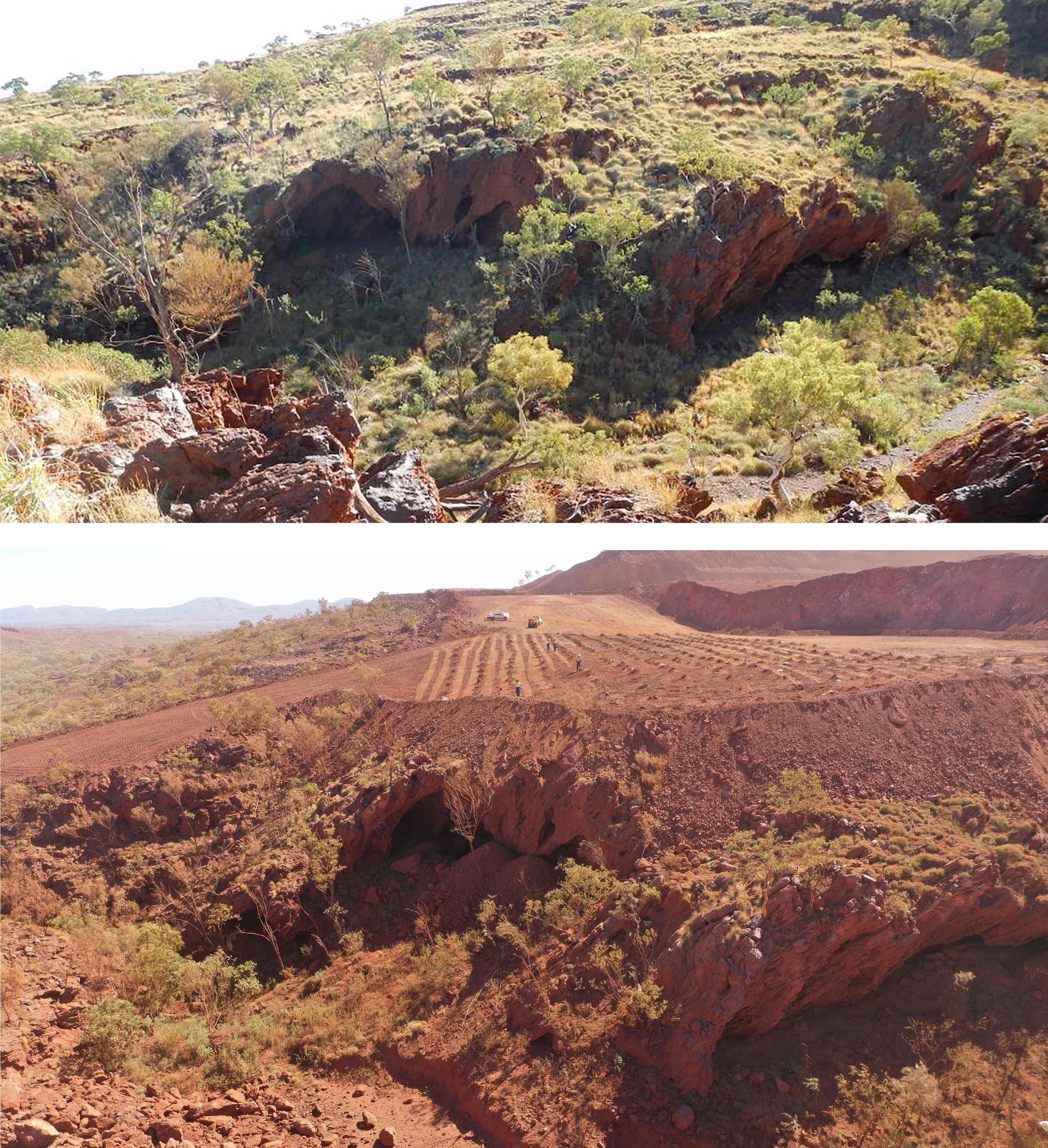Mining firm apologises for destruction of 46,000-year-old Aboriginal caves
Unesco expert compares legal loss of Juukan Gorge caves by Rio Tinto to Isis’ demolition of Palmyra

Your support helps us to tell the story
From reproductive rights to climate change to Big Tech, The Independent is on the ground when the story is developing. Whether it's investigating the financials of Elon Musk's pro-Trump PAC or producing our latest documentary, 'The A Word', which shines a light on the American women fighting for reproductive rights, we know how important it is to parse out the facts from the messaging.
At such a critical moment in US history, we need reporters on the ground. Your donation allows us to keep sending journalists to speak to both sides of the story.
The Independent is trusted by Americans across the entire political spectrum. And unlike many other quality news outlets, we choose not to lock Americans out of our reporting and analysis with paywalls. We believe quality journalism should be available to everyone, paid for by those who can afford it.
Your support makes all the difference.The mining giant Rio Tinto has apologised after blowing up one of Australia’s oldest known Aboriginal sites, in what has been described as an “incomprehensible” mistake.
The Juukan Gorge caves, in the north of Western Australia, are a sacred Aboriginal heritage site with evidence of human occupation stretching back 46,000 years. The two cave systems were the only inland site in Australia to show evidence of continual human occupation through the last Ice Age and numerous ancient artefacts have been recovered there.
But the Juukan Gorge caves were also on the site of Rio Tinto’s Brockman 4 iron ore mine.
Despite a seven-year battle to protect the site by the local custodians of the land, the Puutu Kunti Kurrama and Pinikura People (PKKP), the demolition went ahead on 24 May.
The PKKP said last week they had applied to visit the site and negotiate to stop the blast or limit the damage but were told explosives had already been laid and it was impossible to remove them, the Sydney Morning Herald reported.
The mining giant was first granted approval for work at the Brockman 4 iron ore project in 2013, but archaeological excavation in 2014 recovered around 7,000 ancient artefacts including grinding stones, a bone sharpened into a tool and a 4,000-year-old braided hair belt, analysis of which revealed a direct genetic link between the PKKP today, and the prehistoric cave-dwelling population.
The demolition went ahead with all the necessary approvals in place, despite the archaeological finds indicating the site was even more significant than previously thought.
The loss of the caves has sparked international outcry and a pledge by Australia’s federal government to review the relevant laws.
Rio Tinto’s iron ore chief executive Chris Salisbury apologised for the distress the company has caused.
In a statement he said: “We pay our respects to the Puutu Kunti Kurrama and Pinikura People (PKKP), and we are sorry for the distress we have caused. Our relationship with the PKKP matters a lot to Rio Tinto, having worked together for many years.
“We have operated on PKKP country under a comprehensive and mutually agreed participation agreement since 2011.
“At Juukan, in partnership with the PKKP, we followed a heritage approval process for more than 10 years. In 2014 we performed a large-scale exercise in the Juukan area to preserve significant cultural heritage artefacts, recovering approximately 7,000 objects.”

He added: “We will continue to work with the PKKP to learn from what has taken place and strengthen our partnership. As a matter of urgency, we are reviewing the plans of all other sites in the Juukan Gorge area.”
Losing the site was a “devastating blow” to the traditional owners, tribe representative John Ashburton told Reuters. “There are less than a handful of known Aboriginal sites in Australia that are as old as this one ... its importance cannot be underestimated,” he said.
“Our people are deeply troubled and saddened by the destruction of these rock shelters and are grieving the loss of connection to our ancestors as well as our land.”
In Australia heritage sites fall under the control of states and territories, and Western Australian law allows government approval to be given to destroy culturally significant sites, but does not allow consent to be revoked.
Rio Tinto obtained permission to expand their existing iron ore works in 2013 - before the significance of the caves was known and the extensive cache of artefacts was discovered.
Peter Stone, who currently holds the Unesco chair on the protection of cultural property, said the destruction of the ancient caves was “a tragedy”. Speaking on Australian radio, he compared it to the destruction of ancient sites including Palmyra by Isis and the Bamiyan Buddha statues by the Taliban.
The federal minister for indigenous affairs, Ken Wyatt, the first Aboriginal person to be appointed to the role, said it was “incomprehensible” the blasting had gone ahead but said it appeared to be a “genuine mistake”.
“I believe that Rio Tinto are very genuine in the partnership they have with Aboriginal communities (and) organisations,” he told the Australian Broadcasting Corporation.
Join our commenting forum
Join thought-provoking conversations, follow other Independent readers and see their replies
Comments